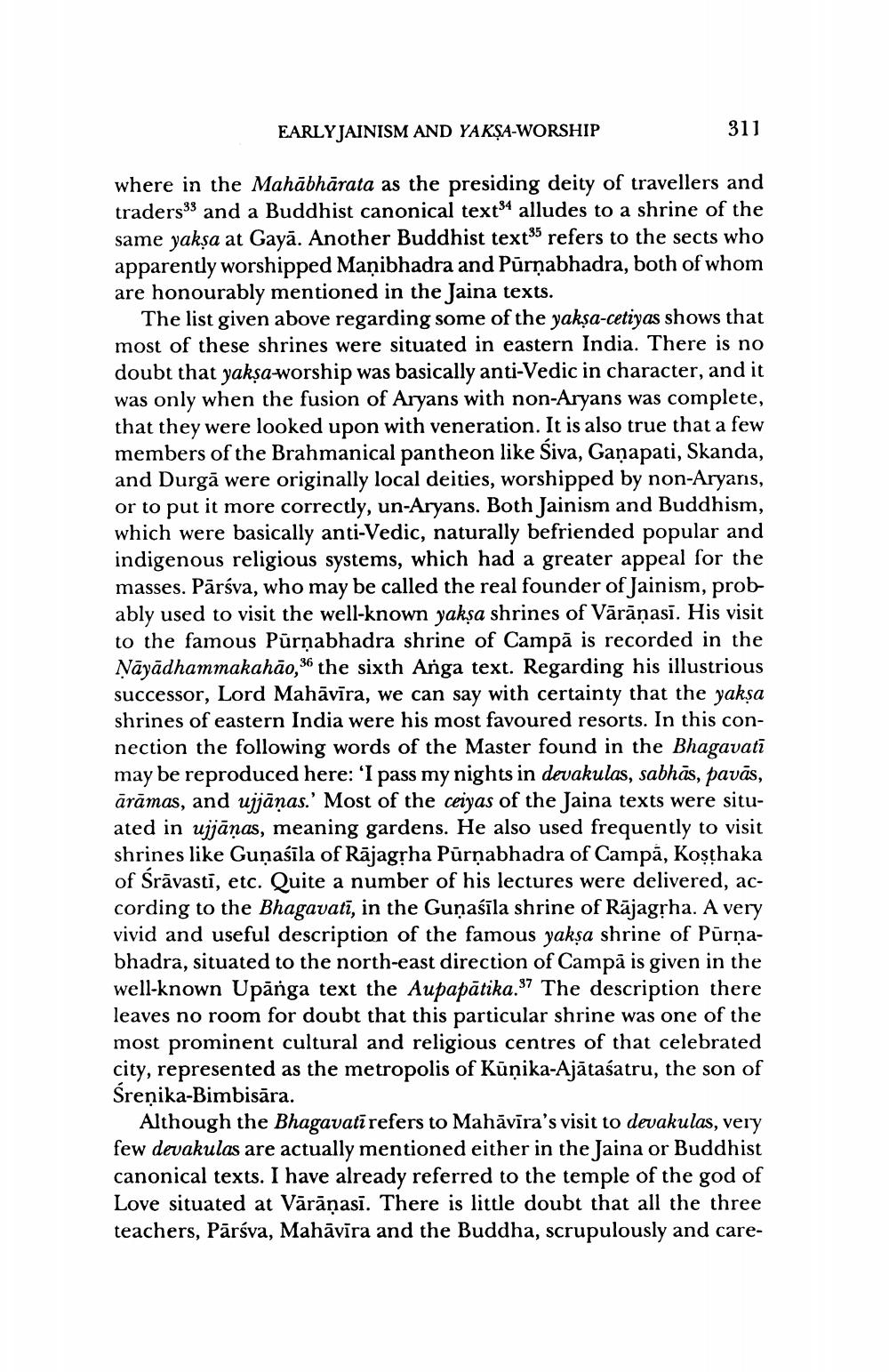________________
311
EARLY JAINISM AND YAKṢA-WORSHIP
where in the Mahābhārata as the presiding deity of travellers and traders 33 and a Buddhist canonical text34 alludes to a shrine of the same yakṣa at Gaya. Another Buddhist text35 refers to the sects who apparently worshipped Manibhadra and Pūrṇabhadra, both of whom are honourably mentioned in the Jaina texts.
The list given above regarding some of the yakṣa-cetiyas shows that most of these shrines were situated in eastern India. There is no doubt that yakṣa-worship was basically anti-Vedic in character, and it was only when the fusion of Aryans with non-Aryans was complete, that they were looked upon with veneration. It is also true that a few members of the Brahmanical pantheon like Śiva, Gaṇapati, Skanda, and Durgā were originally local deities, worshipped by non-Aryans, or to put it more correctly, un-Aryans. Both Jainism and Buddhism, which were basically anti-Vedic, naturally befriended popular and indigenous religious systems, which had a greater appeal for the masses. Pārśva, who may be called the real founder of Jainism, probably used to visit the well-known yakṣa shrines of Vārāṇasī. His visit to the famous Pūrṇabhadra shrine of Campa is recorded in the Nāyādhammakahão,36 the sixth Anga text. Regarding his illustrious successor, Lord Mahāvīra, we can say with certainty that the yakṣa shrines of eastern India were his most favoured resorts. In this connection the following words of the Master found in the Bhagavati may be reproduced here: 'I pass my nights in devakulas, sabhās, pavās, ārāmas, and ujjāņas.' Most of the ceiyas of the Jaina texts were situated in ujjāņas, meaning gardens. He also used frequently to visit shrines like Gunaśīla of Rājagṛha Pūrṇabhadra of Campa, Koṣṭhaka of Śrāvasti, etc. Quite a number of his lectures were delivered, according to the Bhagavati, in the Guṇaśīla shrine of Rajagṛha. A very vivid and useful description of the famous yakṣa shrine of Pūrṇabhadra, situated to the north-east direction of Campa is given in the well-known Upanga text the Aupapātika.37 The description there leaves no room for doubt that this particular shrine was one of the most prominent cultural and religious centres of that celebrated city, represented as the metropolis of Kūņika-Ajātaśatru, the son of Śreņika-Bimbisāra.
Although the Bhagavati refers to Mahāvīra's visit to devakulas, very few devakulas are actually mentioned either in the Jaina or Buddhist canonical texts. I have already referred to the temple of the god of Love situated at Vārāṇasī. There is little doubt that all the three teachers, Pārśva, Mahāvīra and the Buddha, scrupulously and care




